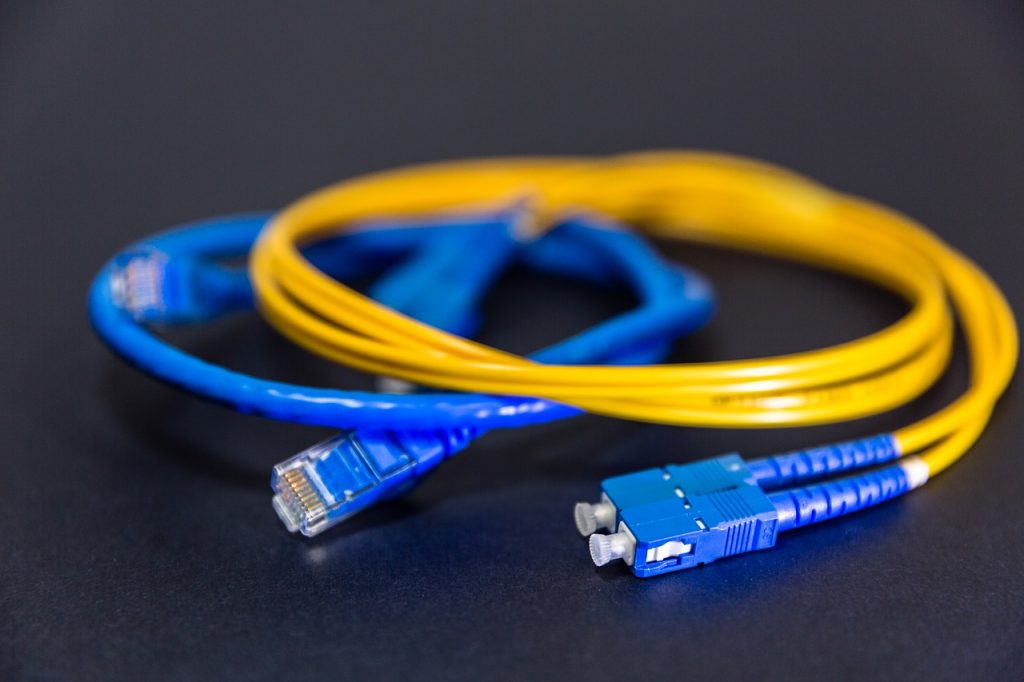At the moment, there are three major types of internet access technologies – broadband cable, DSL and fiber. At the moment, the majority of households and businesses get their internet through one of these three means. Out of the three, fiber internet is definitely the most innovative technology, as well as the technology that shows the most potential.

However, in order to understand why this is so different and important, you need to figure out what exactly fiber internet is and how it is different from the above-mentioned alternatives. Here’s a brief rundown of what you need to know.
Broadband cable connection
If we’re going to start with the comparison, it’s crucial that we initiate with the introduction of the alternative (more traditional) methods. Contrary to the fact that it sounds a bit outdated, a broadband cable is a high-speed access technology that uses both a cable and a modem with an attached coaxial cable. Together, they connect the device with the internet service provider. Most commonly, the broadband cable is provided by the same company that provides you with your cable television.
This is why so many people go for this option, to begin with. First of all, they’re able to leverage the already existent infrastructure, which means that there’s no long waiting period for the installation and the setup. It also means that the company itself can offer a package deal to make it all much more appealing to the potential customer.
For instance, they can give you a discount on every single one of the services, provided that you agree to get them all. When it comes to the speed of the internet, it mostly depends on the package that you opt for. The problem with the bandwidth is the fact that you share the pool with all the other households (paying for the same service) in the area, which may slow you down during peak hours.
Digital subscriber line (DSL)
Another thing you need to take into consideration is DSL internet, which is an option commonly used by both households and businesses. The biggest difference between the DSL and the broadband lies in the fact that it uses phone lines. However, do not mistake DSL with the old-school, painfully slow dial-up connection. First, it’s much faster and more reliable. Also, unlike the ancient dial-up internet, with DSL, you can go on the internet and talk on the phone at the same time (which wasn’t really an option back in the day).
In general, when compared to bandwidth cable internet, there are two things to say about DSL. First of all, it’s just not as fast but it’s substantially cheaper. Also, you’re not sharing the bandwidth with the rest of the internet, which means that you get your own dedicated connection. This self-reliance and consistency are why DSL is particularly popular with businesses. As for households, what they commonly opt for is the ADSL (asymmetric digital subscriber line), where they sacrifice some of their upload speed (while their download speed remains the same) for the sake of the package price.
Fiber internet
Fiber internet is an access option that provides its users with the fastest speed available today. While DSL and broadband cable internet offer download speeds up to 100 and 400 Mbps respectively, with reliable internet fiber, you can easily reach up to 1000 Mbps. The reason for this incredible speed is the fact that it uses light to send data, which is by far the most efficient system. Needless to say, for those whose work and whose livelihood depends on the speed of the internet, this is an investment worth making.
Other than being faster, it also travels further. This is due to the fact that it transmits data over a thin glass cable instead of using copper cables whose efficiency is hampered by electromagnetic interference. This means that once this technology is established as a standard, it will require a substantially cheaper infrastructure to run. This, unfortunately, doesn’t mean that it’s cheaper than the above-listed two alternatives (at the moment).
Conclusion
The problem with fiber internet is the fact that it’s still relatively new to the market, which means that it might not be universally available. This is hardly surprising when you compare it to just how widespread the cable network and telephone networks are. Still, for those who work online and whose work depends on the speed and reliability of their internet, going for fiber internet is definitely a no-brainer. With the growing number of home-based telecommuters, online businesses and similar organizations, it is clear that fiber network is the way of the future.
